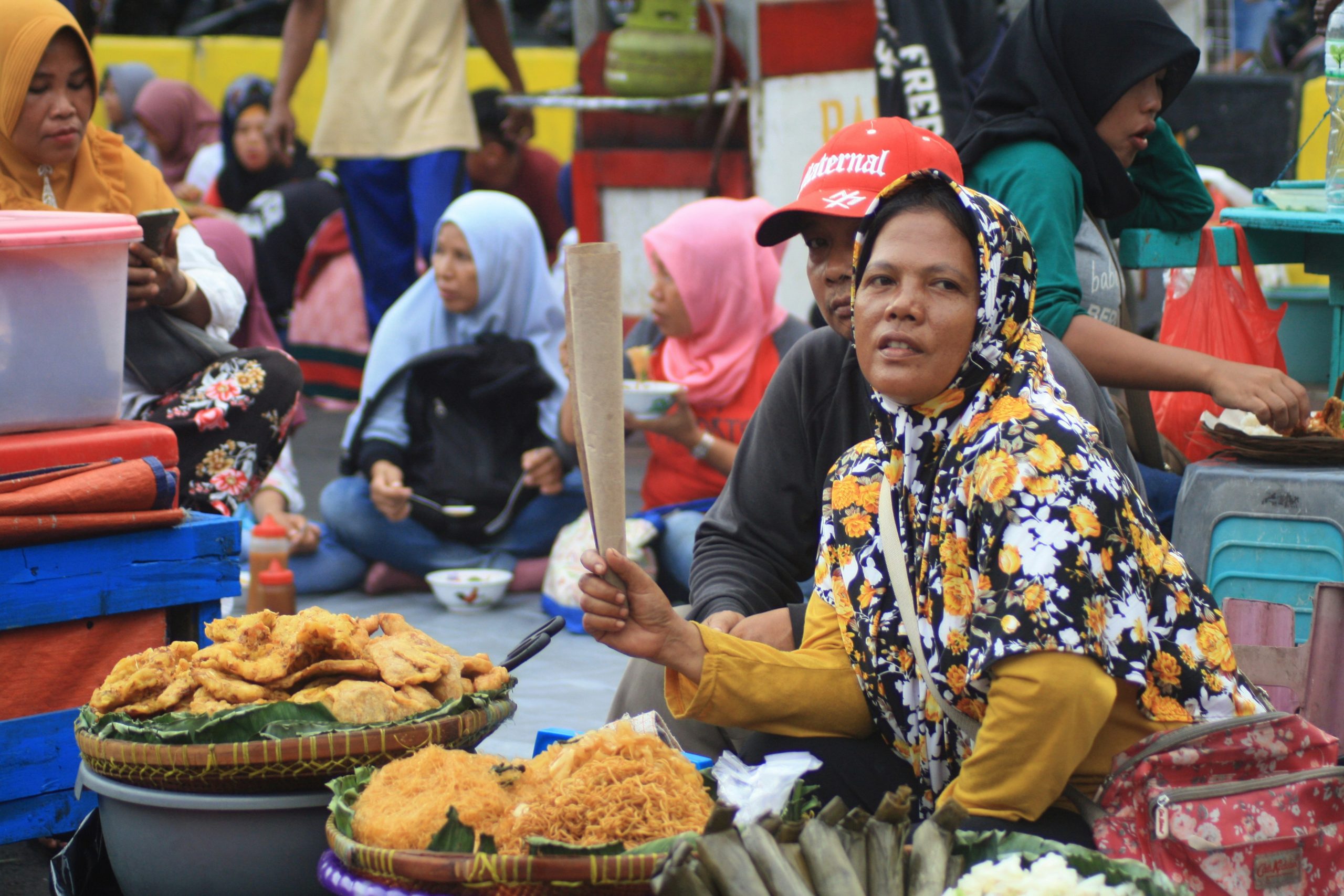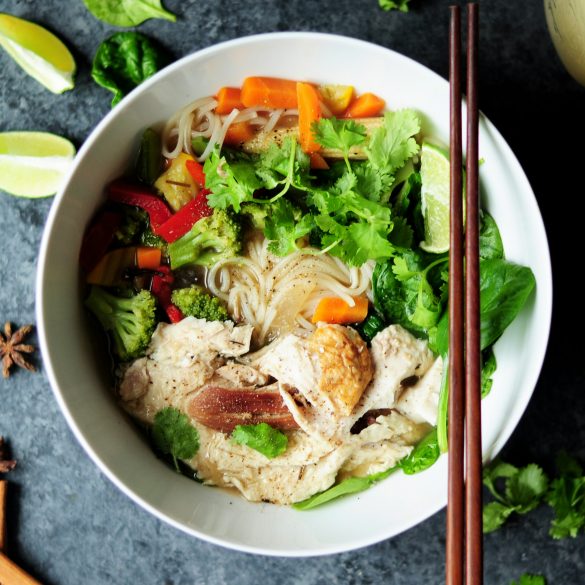Indonesian Cuisine’s Global Rise: From Street Food to Michelin Stars
Last month, while wandering through Jakarta’s bustling Jalan Sabang, I witnessed something extraordinary—a food blogger from France conducting a live stream about gudeg, completely mesmerized by this humble jackfruit dish. What struck me most wasn’t just her enthusiasm, but how she effortlessly connected Indonesian flavors to her international audience. This moment crystallized something I’ve been observing for years: Indonesian cuisine is experiencing an unprecedented global renaissance.
Indonesian food has always been spectacular, but honestly? The rest of the world is just catching up. From street vendors in Yogyakarta to Michelin-starred restaurants in Singapore, Indonesian flavors are commanding attention like never before1. We’re talking about a culinary revolution that’s transforming how international food critics, chefs, and everyday food lovers perceive Southeast Asian cuisine.
Indonesia at a Glance
Indonesia comprises over 17,000 islands with more than 300 ethnic groups, each contributing unique culinary traditions. This incredible diversity has created one of the world’s most complex and flavorful cuisines, with over 5,000 traditional recipes documented across the archipelago.
What fascinates me—and what I’ve consistently found in my conversations with international chefs—is how Indonesian cuisine embodies everything modern diners crave. Complex layers of flavor? Check. Sustainability through traditional fermentation and preservation? Absolutely. Plant-forward dishes that happen to be incredibly satisfying? You bet. Umami-rich ingredients that make everything taste better? Indonesian cuisine has been perfecting this for centuries.
The timing couldn’t be more perfect. As global food culture shifts toward authenticity, sustainability, and bold flavors, Indonesian cuisine offers all three in abundance. But here’s what really excites me: this isn’t just about trendy restaurants appropriating Indonesian ingredients. We’re witnessing genuine appreciation for the cultural stories, traditional techniques, and family recipes that make Indonesian food so extraordinary.
Why Now? The Perfect Storm
Several factors have converged to create this moment for Indonesian cuisine: increased travel accessibility pre-pandemic, social media’s visual food culture, growing interest in plant-based eating, and—perhaps most importantly—Indonesian chefs and food entrepreneurs taking their rightful place on the global stage.
The Deep Roots: Understanding Indonesian Culinary Heritage
Having spent considerable time exploring Indonesian food culture, I’m constantly amazed by how each dish tells a story—not just of flavor, but of migration, trade, adaptation, and creativity. Indonesian cuisine isn’t just cooking; it’s edible history spanning centuries of cultural exchange.
“Indonesian cuisine represents one of the world’s most sophisticated spice cultures, where every region has developed unique techniques for balancing sweet, sour, salty, bitter, and umami flavors.” Chef William Wongso, Indonesian Culinary Ambassador
Let me break down what makes Indonesian cuisine so compelling to international palates2. First, there’s the spice complexity that goes way beyond just “hot and spicy.” We’re talking about intricate spice pastes—bumbu—that form the foundation of thousands of dishes. Each region has developed its own bumbu traditions, creating flavor profiles that are simultaneously familiar and completely unique to international diners.
The Building Blocks of Indonesian Flavor
| Core Spice | Traditional Use | Global Application | Health Benefits |
| Galangal | Curry bases, soups | Fine dining aromatics | Anti-inflammatory |
| Candlenuts | Sauce thickening | Vegan protein source | Healthy fats |
| Kecap Manis | Sweet soy seasoning | Umami enhancement | Natural fermentation |
| Tempeh | Protein staple | Plant-based meat alternative | Probiotics, complete protein |
What really gets me passionate about Indonesian food culture is how sustainability was built into the system long before it became a global concern3. Traditional Indonesian cooking maximizes every ingredient—banana leaves become natural packaging, coconut palm provides oil, sugar, and fiber, and fermentation techniques like those used for tempeh and tape create complex flavors while preserving food naturally.
The regional diversity is mind-blowing. Padang cuisine from West Sumatra brings fiery complexity through rendang and other coconut-based curries. Javanese cooking emphasizes sweet-savory balance with gudeg and ayam bacem. Balinese cuisine incorporates Hindu influences with elaborate spice combinations and ceremonial significance. Each tradition has developed sophisticated techniques that international chefs are now recognizing and adapting.
- Fermentation mastery: From tempeh to tapai, Indonesian cooks pioneered fermentation techniques centuries ago
- Spice layering: Complex bumbu preparations that build flavor in multiple stages
- Preservation methods: Traditional techniques that maintain nutritional value while extending shelf life
- Plant-forward approach: Extensive use of vegetables, legumes, and plant proteins
I’ve noticed that international chefs initially approach Indonesian cuisine through familiar entry points—satay, nasi goreng, rendang—but then discover the incredible depth beyond these gateway dishes. The real magic happens when they understand how Indonesian cooks think about layering flavors, balancing textures, and creating harmony between contrasting elements.

Breaking Through: Indonesian Cuisine on the World Stage
The transformation I’ve witnessed over the past five years has been remarkable. What used to be relegated to “ethnic food” sections of international food magazines is now featured in mainstream culinary publications as innovative, sophisticated cuisine worthy of serious critical attention4.
Milestone Moments
In 2023, Indonesian restaurants received unprecedented international recognition. Singapore’s Michelin Guide included multiple Indonesian establishments, while London’s Indonesian restaurant scene exploded with high-end interpretations of traditional dishes. This wasn’t just trend-following—it represented genuine culinary appreciation.
Let me share what I consider the pivotal moments in Indonesian cuisine’s global journey. First, the rise of Indonesian chefs who refuse to compromise their culinary identity while making their food accessible to international palates. Chefs like Bara Patir and Mandif Warokka haven’t just adapted Indonesian recipes—they’ve educated international diners about the sophistication inherent in traditional Indonesian cooking.
“We’re not trying to make Indonesian food ‘international.’ We’re showing the world that Indonesian cuisine has always been international—born from centuries of global trade and cultural exchange.” Chef Bara Patir, Plataran Group
The social media revolution has been absolutely crucial5. Indonesian food is incredibly photogenic—the vibrant colors, artistic presentations, and dramatic contrasts make for compelling visual content. But more importantly, social media has allowed Indonesian food culture to tell its own story rather than being filtered through Western interpretations.
Success Stories Worth Celebrating
Here’s what excites me most: the success stories aren’t just about fine dining. Yes, we’ve seen Indonesian restaurants earn Michelin recognition, but we’ve also witnessed food truck owners in Los Angeles drawing massive crowds for authentic gado-gado, and specialty Indonesian ingredient suppliers expanding into mainstream grocery chains across Europe and North America.
- Restaurant Locavore in Bali earning international acclaim for modern Indonesian cuisine using hyperlocal ingredients
- Kopitiam culture spreading globally, with Indonesian coffee shops opening in major cities worldwide
- Indonesian spice blends and sauces gaining shelf space in mainstream international supermarkets
- Culinary tourism to Indonesia increasing 40% annually pre-pandemic, with food tours becoming major attractions
The ingredient revolution deserves special attention. International chefs are discovering that Indonesian ingredients solve problems they didn’t even know they had6. Tempeh provides plant-based protein with umami depth that tofu can’t match. Kecap manis offers natural sweetness with complex fermented flavors. Palm sugar provides sustainable sweetening with mineral complexity that refined sugar lacks.
What really strikes me is how Indonesian cuisine appeals to contemporary dietary preferences without compromising authenticity. Many traditional Indonesian dishes are naturally vegan, gluten-free, or can be easily adapted. The emphasis on vegetables, fermented foods, and whole grains aligns perfectly with current health trends while maintaining cultural integrity.
The critical recognition has been overwhelming. Food & Wine magazine named Indonesian cuisine one of the “flavors to watch,” while the James Beard Foundation has featured Indonesian chefs in their programming. This isn’t tokenism—it’s genuine appreciation for culinary excellence that happened to originate in Indonesia.
Looking Ahead: Sustainability, Innovation, and Cultural Preservation
As I consider where Indonesian cuisine is heading globally, I’m genuinely optimistic about the balance between innovation and tradition7. The next wave of Indonesian culinary influence will likely focus on sustainability—an area where traditional Indonesian cooking has always excelled but is now being recognized internationally.
The fermentation revolution happening in fine dining worldwide? Indonesian cooks have been masters of fermentation for centuries. The plant-forward movement gaining momentum in Western cuisine? Indonesian food culture has always emphasized vegetables, legumes, and plant proteins. The local sourcing trend? Indonesian regional cuisines are inherently hyperlocal, developed around specific microclimates and ingredient availability.
“Indonesian cuisine offers a roadmap for sustainable, delicious cooking that the world desperately needs. We’re not just sharing recipes—we’re sharing a philosophy of cooking that respects ingredients, culture, and the environment.” Dr. Murdijati Gardjito, Food Anthropologist
I’m particularly excited about the next generation of Indonesian food entrepreneurs8. They’re creating products that maintain cultural authenticity while meeting international market demands. Think artisanal tempeh producers using traditional fermentation methods but with modern food safety standards, or sambal makers creating small-batch products that capture the complexity of family recipes.
Emerging Opportunities
- Functional foods: Indonesian ingredients like turmeric, ginger, and moringa gaining recognition for health benefits
- Climate-conscious cooking: Traditional Indonesian techniques offering solutions for low-impact food preparation
- Cultural education: Indonesian culinary programs in international cooking schools
- Ingredient innovation: Modern applications of traditional Indonesian fermentation and preservation methods
The cultural preservation aspect is crucial. As Indonesian cuisine gains international recognition, there’s a responsibility to maintain authenticity while allowing for evolution. I’ve seen too many cuisines lose their soul during globalization. The encouraging thing about Indonesian cuisine’s current moment is that Indonesian chefs and cultural leaders are actively involved in defining how their food culture is presented internationally.
Your Indonesian Culinary Journey Starts Here
Ready to explore Indonesian cuisine? Start with rendang for complex spice layers, try gado-gado for fresh, healthy satisfaction, and discover tempeh as a protein revelation. Visit Indonesian restaurants in your area, experiment with Indonesian ingredients at home, and most importantly—approach this cuisine with curiosity and respect for its cultural significance.
Looking ahead, I predict Indonesian cuisine will continue gaining recognition not just for its flavors, but for its cultural values—community, sustainability, and respect for ingredients. This isn’t just about food trends; it’s about adopting a more thoughtful, connected approach to cooking and eating that Indonesian culture has always embodied.
The global rise of Indonesian cuisine represents something larger than culinary fashion. It’s recognition of sophisticated food culture that deserves its place alongside other internationally celebrated cuisines. From street food stalls in Jakarta to Michelin-starred restaurants in Singapore, Indonesian cuisine is proving that authenticity, innovation, and cultural pride can coexist beautifully.
References



